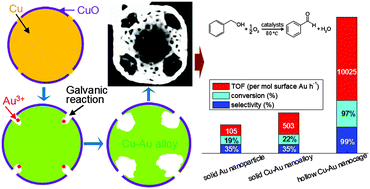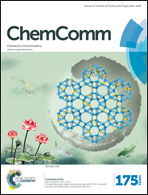Partial-surface-passivation strategy for transition-metal-based copper–gold nanocage†
Abstract
An effective strategy involving the corrosion of partial-surface-passivated Cu nanoparticles is proposed for synthesizing transition-metal-based Cu–Au alloy nanocages. Time-dependent X-ray absorption spectroscopy demonstrates that the hollow-cage Cu–Au alloy nanostructure is formed by sequential erosion of the partial surface and interior Cu and by the alloying of Au and Cu.


 Please wait while we load your content...
Please wait while we load your content...